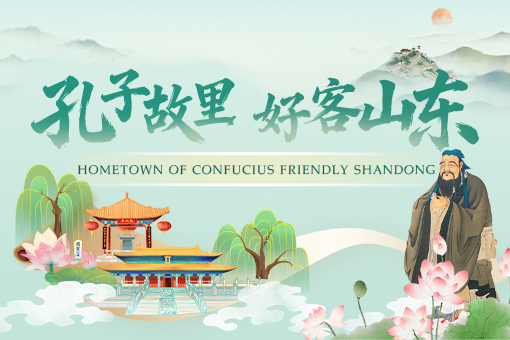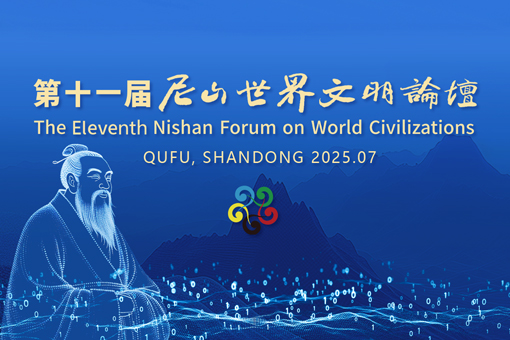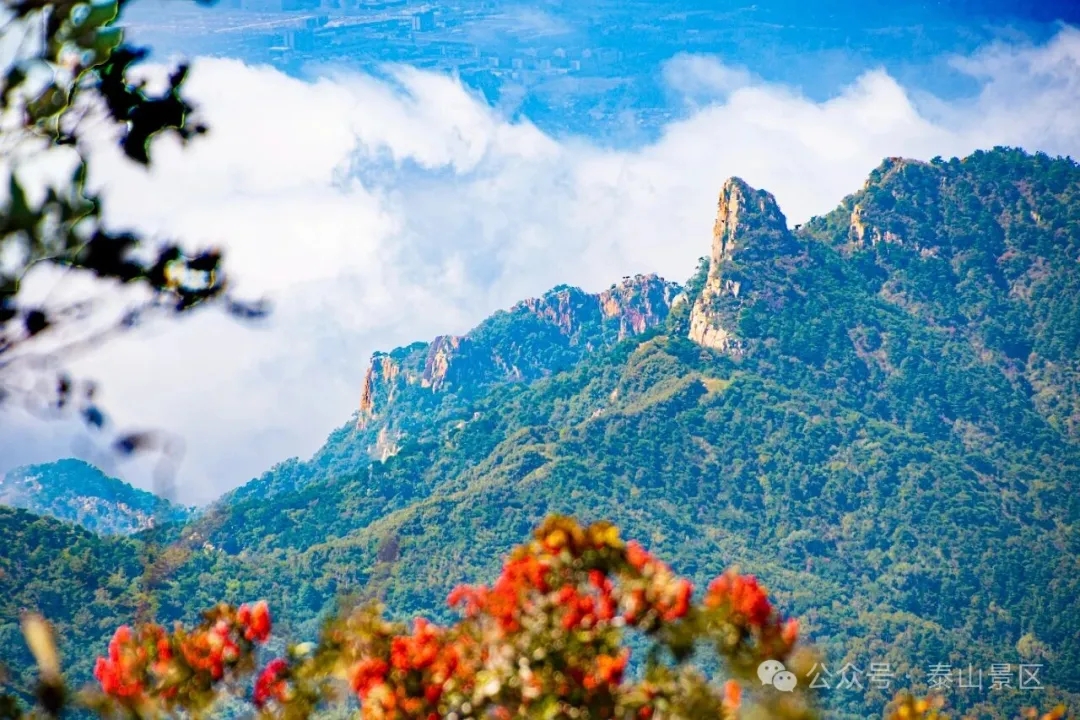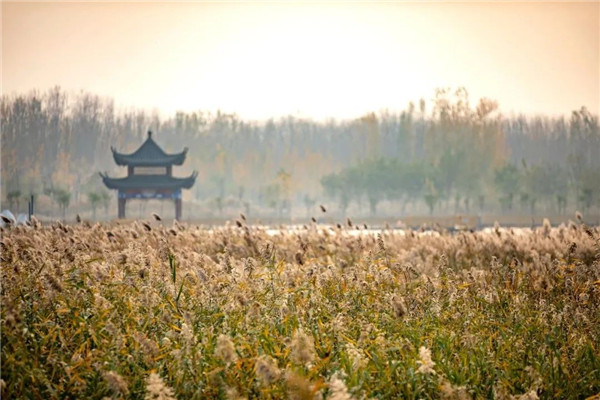Integration of culture, tourism pays dividends
Once a shopping mall, today the vivid reproduction of Tang Dynasty (618-907) urban life in the Twelve Hours of Chang'an theme block in Xi'an, Shaanxi province, is a huge draw for visitors.
Visitors can shop, watch performances, wine and dine in the historical setting, which is within walking distance of the city's well-known historical landmark, the Giant Wild Goose Pagoda.
"Some tourists try out traditional Chinese costumes, get their hair styled into a bun and adorn it with floral accessories to fully immerse themselves in the charm of Tang culture," said Zou Linfeng, chair of the Shaanxi Cultural Tourism Co, a major investor in the block.
Since its opening in April 2022, the theme space has received more than 4 million visitors, with daily traffic exceeding more than 7,000 visits, Zou said.
He owed the success of the project to the country's support for integrated development of culture and tourism over the years, which has paid huge dividends, not just enhancing traveler experience but also enabling related sectors to play a prominent role in driving the economy.
According to the Ministry of Culture and Tourism, during the 13th Five-Year Plan (2016-20) period, the share of tourism and related industries increased in the GDP, with the contribution of tourism to the national economy going beyond 10 percent.
Since the beginning of this year, the tourism industry has seen accelerated recovery and quality improvement. According to the China Tourism Academy's forecast for this year, the number of domestic tourist visits will exceed 6 billion, and domestic tourism revenue will surpass 6 trillion yuan ($837.9 billion).
President Xi Jinping has been advancing the integrated development of culture and tourism related industries. In September 2020, Xi pointed out that culture and tourism industries are inseparably linked and related parties should adhere to shaping tourism through culture and highlighting culture through tourism.
He made the remarks at a symposium attended by experts and representatives from the fields of education, culture, health and sports to solicit opinions on the socioeconomic development in the 14th Five-Year Plan period (2021-25).
The Ministry of Culture and Tourism released a master plan in 2021 for developing culture and tourism during the 14th Five-Year Plan period and vowed to continue to upgrade the structure of the cultural industry and promote the employment of new technologies and digitization.
At the 20th National Congress of the Communist Party of China in October 2022, Xi, who is also general secretary of the CPC Central Committee, stressed again that "we will encourage positive interplay between culture and tourism and advance deeper integration of the two sectors".
According to Zou, of Shaanxi Cultural Tourism Co, this has created a favorable environment for the development of culture and tourism industries in Xi'an.
The founding team of the theme block in Xi'an tapped into local culture and tourism resources before reinventing an existing commercial complex as a Tang-style marketplace, complete with immersive performances and handicrafts, all of which have breathed new vitality into the culture and tourism market, Zou added.
The block is among major local scenic spots in Xi'an. The Datang Everbright City, which features Tang Dynasty architectural elements, is another tourism magnet.
Last year, Xi'an received 278 million traveler visits, up 33.1 percent year-on-year, and tourism revenue surged 65.0 percent to 335 billion yuan, local government sources said.
Dai Bin, president of China Tourism Academy, said people's demand for culture and tourism is growing as living standards improve.
To meet the new expectations and requirements of the public for high-quality culture-tourism integration, smart tourism, digital tourism and technological tourism have transitioned from concepts to reality, he said.
At Yuanmingyuan, or the Old Summer Palace, in Beijing, digitalization has enhanced culture and tourism integration, making the park a big hit among visitors.
"We scanned the site, studied various relics and combined historical documents, samples and Qing Dynasty engineering practices to digitally restore a large number of buildings," said Qiu Wenzhong, director of the administration office of Yuanmingyuan, once the imperial seasonal resort of the Qing Dynasty (1644-1911).
The extensive research has provided Yuanmingyuan with rich cultural content, and the authorities developed digital products and recreations to improve traveler experience.
In 2023, Yuanmingyuan launched an immersive time capsule, which allows visitors to view the historical glory of the park with the help of digital technology. Visitors can witness the past and present of the park, including its former architectural appearance, hear interesting anecdotes and watch re-enactments of past scenes.
Qiu emphasized that the aim is to fully engage visitors and make them feel like active participants in the immersive experience, rather than being mere tourists.
The time travel experience has produced great results, with more than 1,000 visitors — about 80 percent of its capacity — witnessing it on most days during last year's summer vacation period, Qiu said.
The culture and tourism master plan for 2021-25 also urges relevant parties to improve protection, inheritance and utility of cultural heritage, while enhancing the modern tourism system.
Xi has underscored the importance of related work and called for more efforts to protect cultural relics and heritage.
Under his instructions, construction of national cultural parks has made great strides, highlighting historical sites, such as the Great Wall and the Beijing-Hangzhou Grand Canal, all of which epitomize Chinese culture and national ethos.
It has sent strong signals to tourism players and encouraged them to inject more cultural elements into what they have to offer.
At Beijing Wtown, a water resort at the foot of the Simatai section of the Great Wall in Miyun district, northeastern Beijing, cultural activities such as cloth dyeing, printing and kite making have proved a great draw for travelers, said Xiao Jiakun, brand manager of the resort.
"We have also continuously strengthened the 'Great Wall plus' strategy and rolled out star gazing, sunrise watching and yoga activities on the Great Wall to better immerse visitors in the history and culture," Xiao said.
Last year, Wtown received more than 1.5 million traveler visits, up 34.9 percent over the previous year, according to the town's administration. Tourism revenue increased by 6.8 percent to 735 million yuan in 2023.
At the Badaling section of the Great Wall scenic spot in Yanqing district, northwest of Beijing, new art performances are being offered during night tours.
"The idea is to help travelers experience our traditional culture and better understand its charm," said Zhai Yanwei, deputy general manager at Badaling Culture and Tourism Group.
The increasing emphasis on culture at the scenic area has helped it pack in 147,000 inbound travels as of mid June, up 81 percent over the same period in 2023, according to Zhai.
"By integrating the performance with the Great Wall culture, we have gradually built brand influence and attracted a growing number of visitors, and our economic benefits have been considerable," Zhai said.
Dai, the president of China Tourism Academy, said that with technological evolution and industrial transformation, there will be an ongoing need for culture-tourism integration to meet emerging demands.
Dai said technology should be used to continuously improve culture-tourism products and services, and management should be upgraded to offer effective support for their supply.
yangfeiyue@chinadaily.com.cn



 Embark on cultural trip in Shandong
Embark on cultural trip in Shandong Global civilizations shine at Nishan in Shandong
Global civilizations shine at Nishan in Shandong Explore Taishan Mountain's autumn splendor
Explore Taishan Mountain's autumn splendor

